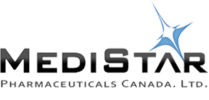In recent years, the conversation around performance-enhancing substances has evolved significantly. As we move into 2025, Canadians seeking to enhance their physical performance continue to search for options that balance effectiveness with safety. This comprehensive review examines the safest anabolic steroids available in Canada, taking into account legal considerations, potential side effects, and effectiveness.
Understanding the Legal Landscape in Canada
Before discussing specific substances, it’s crucial to understand that in Canada, anabolic steroids are classified as Schedule IV controlled substances. This means that possession for personal use is not typically criminalized, but selling or trafficking these substances without proper authorization carries significant penalties. All steroids discussed in this article should only be used under proper medical supervision and with a valid prescription.
Medical Applications vs. Performance Enhancement
Many anabolic steroids serve legitimate medical purposes, treating conditions like hormone deficiencies, delayed puberty, and muscle wasting diseases. When prescribed by healthcare professionals for these conditions, steroids are used at therapeutic doses that minimize risks. Performance enhancement typically involves higher doses, which inherently increases risk profiles.
Testosterone: The Foundation
Testosterone replacement therapy (TRT) remains one of the safest approaches when medical supervision is involved. As a naturally occurring hormone, therapeutic doses of testosterone typically carry fewer side effects than synthetic alternatives. In 2025, Canadian healthcare providers continue to prescribe various forms including:
• Testosterone enanthate
• Testosterone cypionate
• Testosterone undecanoate
When administered under proper medical guidance with regular blood work, TRT can effectively address legitimate testosterone deficiencies while maintaining a relatively favorable safety profile.
Anavar (Oxandrolone): Milder Option
Anavar is widely considered one of the more tolerable anabolic steroids, particularly at therapeutic doses. Originally developed to promote weight gain in patients recovering from extensive surgery or chronic infections, it demonstrates lower hepatotoxicity (liver toxicity) compared to many oral alternatives. Anavar tends to produce minimal androgenic side effects, making it sometimes prescribed for women and adolescents with certain medical conditions.
However, even Anavar is not without risks. Side effects can include lipid profile disruption and suppression of natural testosterone production, particularly at higher doses or with extended use.
Primobolan (Methenolone): Lower Side Effect Profile
Primobolan has maintained its reputation in 2025 as one of the milder anabolic steroids available. Available in both oral and injectable forms, Primobolan demonstrates minimal estrogenic activity, reducing the risk of water retention, gynecomastia, and related side effects. It also exhibits less impact on cardiovascular markers than many alternatives.
The tradeoff for this safety profile is that Primobolan produces more modest gains than more potent compounds, making it less commonly abused in sporting contexts.
Deca-Durabolin (Nandrolone Decanoate): Therapeutic Applications
When used at prescribed therapeutic doses, Nandrolone can offer joint pain relief and assist with anemia while carrying a moderate side effect profile. Its medical applications include treatment for certain types of anemia, some cases of osteoporosis, and specific wasting conditions.
However, at higher doses used for performance enhancement, nandrolone can cause significant suppression of natural testosterone production and potential cardiovascular concerns.
SARMS: The Alternative Approach
While not technically steroids, Selective Androgen Receptor Modulators (SARMs) have gained popularity as alternatives that potentially offer more targeted effects with fewer side effects. As of 2025, research continues to evolve, with compounds like Ostarine and Ligandrol undergoing clinical trials for various medical applications.
It’s important to note that many SARMs remain in research phases, and their long-term safety profiles are not fully established. Additionally, their legal status remains complex in Canada.
Potential Side Effects and Risk Mitigation
Even the “safest” anabolic steroids can cause significant side effects, including:
• Suppression of natural hormone production
• Cardiovascular complications
• Liver stress (particularly with oral compounds)
• Psychological effects
• Disruption of cholesterol levels
Risk mitigation strategies that responsible medical providers implement include:
• Regular comprehensive blood work
• Proper post-cycle therapy protocols
• Cardiovascular health monitoring
• Lowest effective dosing
• Limited cycle durations
The Importance of Medical Supervision
The safest approach to any hormone therapy is under proper medical supervision. In 2025, Canada continues to maintain strict protocols around hormone replacement therapies, with specialists monitoring patients’ responses and adjusting treatment accordingly. Self-administration without medical oversight significantly increases risks, regardless of which compound is chosen.
Conclusion
When discussing the “safest” steroids in 2025, context matters enormously. What might be relatively safe under proper medical supervision for treating a specific condition can become dangerous when misused. Testosterone replacement therapy remains the gold standard for addressing legitimate hormone deficiencies, while compounds like Anavar and Primobolan represent the milder end of the anabolic steroid spectrum.
The safest approach remains working with qualified healthcare providers who can determine if there’s a legitimate medical need, prescribe appropriate dosages, monitor side effects, and adjust treatment as necessary. No performance enhancement goal justifies compromising long-term health, and Canadian law continues to reflect this priority through its regulatory framework.
